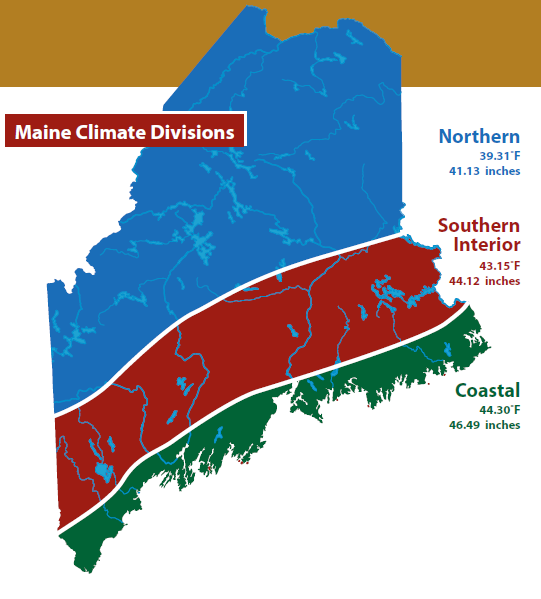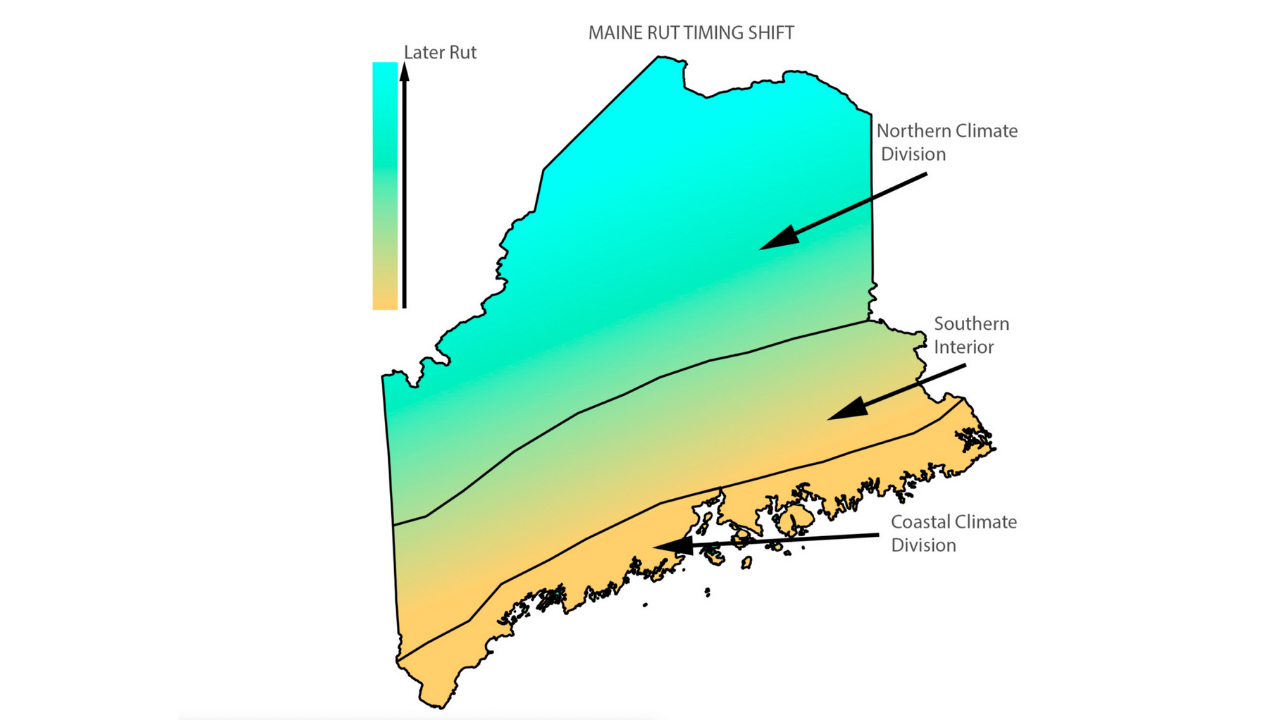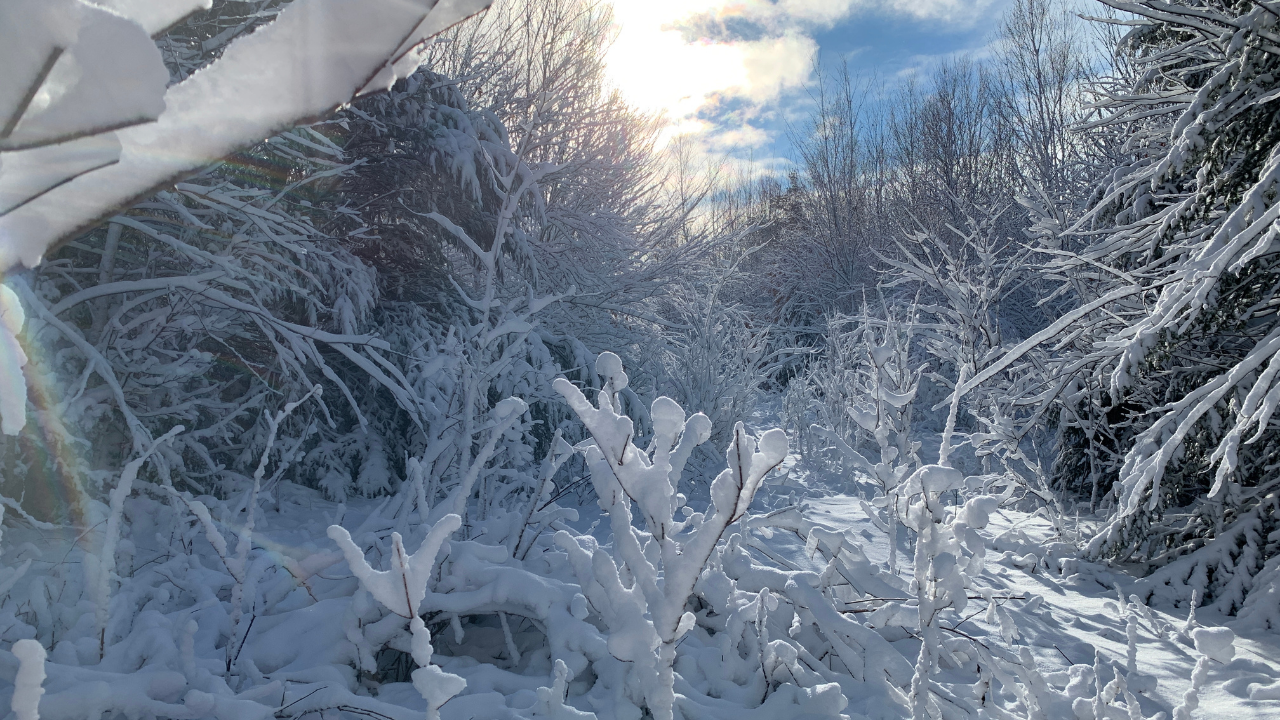Last Updated on January 1, 2022 by Jason Tome
When tracking deer in the snow you can maximize your season by moving to areas with the best snow conditions.
Not all hunting seasons are created equal when it comes to tracking big woods bucks on snow. Sometimes there is a lot of snow, sometimes there is too much snow, and other times there are only a few areas that get snow.
In order to get the most out of your tracking season, you will want to put yourself in a position to capitalize on the best snow throughout the season.
I don’t necessarily apply this tactic every time I’m tracking. Sometimes I hunt in poorer snow conditions if prior information gathered through scouting or hunting was appealing. However, it is a tool in my arsenal and I use it every season, especially if I’m looking to hunt a new area. Thus, I felt a post on this subject may be helpful to some.
This post focuses on the state of Maine because that is where I do the most tracking, you can apply these same ideas to the states that you hunt.
Don’t Wait For The Snow – Go Find It
Where The Earliest Snowfall Occurs In Maine
Since Maine is a big state, there is a lot of variability in temperature as you go north/northwest. For example, it is uncommon to have snow in southern Maine for the entire deer hunting season. If we are lucky we might get one snowstorm or two during muzzleloader season (the last two weeks of the season in December).
If you compare this to western Maine (Upton, Rangeley, Jackman, or Allagash Regions) there is a big difference in snowfall. It is not uncommon for these areas to have snow during the first week of the season, especially in the mountains of these areas. Sometimes these areas will even have snow before the season starts.
In the photo below, you can see that the blue area is on average 5ºF colder. This may not seem like a lot but it makes a big difference in if perception turns to snow or rain during the hunting season.

The reason these areas get more snow is that they are colder in general. Additionally, the mountains cause raising air to cool and condense providing more snow accumulations.
If you want to learn more about Maine temperatures/climate and how they affect Maine deer hunting you can check out: When Is The Whitetail Rut In Maine? Detailed Explanation And Rut Dates

By keeping an eye out for snow throughout the state you will be able to extend your tracking season.
Benefits of Being Mobile When Tracking Bucks In Snow
You can maximize your deer tracking season by being mobile and finding snow that has optimal:
- Depth
- Noise
- Fresh Snow = Fresh Tracks = Easier to Read
- Snow Consistency
Most deer trackers will track deer in the same areas time and time again as long as there is snow on the ground – even if it’s subpar snow. This is often because this is the land they are more familiar with.
In order to maximize your tracking season by staying in the best snow conditions, it may be worth your while to travel to new areas where the snow conditions are better.
For example, instead of fighting an uphill battle through deep, crunchy snow in the north maybe you instead opt to head south where there will be less snow and temperatures are warmer because snow never froze, meaning the snow is still soft and quiet, creating ideal tracking conditions.
Also, the eastern part of Maine also gets less snow. So you may want to hunt more easterly in order to find areas that have the perfect amount of snow for tracking.
How Do You Know Where To Find The Best Snow?
Best Snow Conditions For Tracking Deer
The best snow conditions for tracking deer is 3-4 inches of quiet and somewhat wet snow so that tracks are easily visible. Of course, it is not always possible to have these perfect tracking conditions but you can get as close as possible by being mobile.
Move To Areas With The Best Temperature
Ultimately, you will be using temperature and previous snowfall information in order to decide where the best tracking snow will be. You should be able to get a pretty good idea of the snow consistency in the different areas of the state by paying attention to the temperature fluctuations of previous days.
Hone in on different temperatures throughout the state so you can stay in the best tracking snow for longer, extending the time you spend in the best tracking conditions. This will put the odds in your favor and give you the best chance of tracking down a big buck.
Once the snow has fallen it immediately starts to change depending on the temperature. This is sometimes a good thing… and sometimes a bad thing.
If snow melts during the day and then freezes during the night, it will be crunchy. Crunchy snow is not great tracking snow. If you keep an eye on the weather throughout the state you may be able to find areas that stayed above freezing at night.
Also, if there was a freeze at night, some areas of Maine may be above freezing during the day whereas other places may stay freezing all day. If you travel to the areas where the temps are above freezing and melting, then you will have better snow as the day continues because snow will become quieter as the frozen snow melts.
Move To Areas With Fresh Snow
In addition to temperature, you can also use fresh snowfall to your advantage. Snow doesn’t usually fall across the entire state. Usually, there will be some areas that get snow and other areas that don’t get snow.
I would much rather be in an area with fresh snow, especially if it’s been a long time since new snow has fallen. If I think my chances are going to be better by moving to a new spot with fresh snow, then I will make the move.

Digital Tools For Analyzing Tracking Snow Conditions
There are a few tools you can use to figure out where the best snow conditions will be for tracking deer on snow.
WeatherStreet – Maine Snow Depth and Snow Accumulation
I use this tool to see how much snow different areas of Maine have after a snowstorm.
Weather Underground – Weather History
I use this tool to look at past temperatures and snowfall in order to predict what the snow conditions are likely to be in an area.
Your Favorite Weather App To Gauge Temperature
I use The Weather Channel as my Weather App to keep me updated on how the temperature will fluctuate throughout the day. This way I know how snow conditions are expected to change on a particular day.
Final Thoughts
Hopefully, this concept will help you stay in the best deer tracking conditions, which will maximize your deer tracking season, and will give you more success in future hunts. As I said, I don’t necessarily apply this to every hunt but it is a great tool to have in your arsenal when snow conditions in your area are just not very conducive to tracking.
Looking For More Tracking Information? Find Me On:
Best,
Jason Tome
